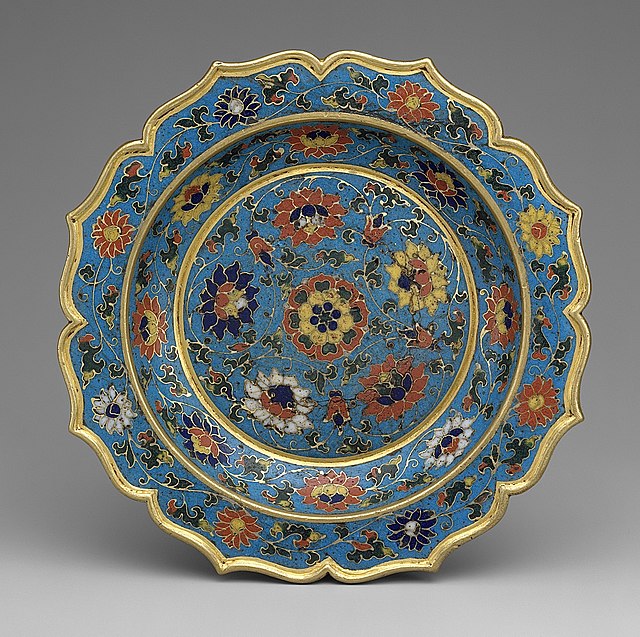The Royal Gold Cup or Saint Agnes Cup is a solid gold covered cup lavishly decorated with enamel and pearls. It was made for the French royal family at the end of the 14th century, and later belonged to several English monarchs before spending nearly 300 years in Spain. It has been in the British Museum since 1892, where it is normally on display in Room 40, and is generally agreed to be the outstanding surviving example of late medieval French plate. It has been described as "the one surviving royal magnificence of the International Gothic age". According to Thomas Hoving, former director of the Metropolitan Museum of Art in New York, "of all the princely jewels and gold that have come down to us, this is the most spectacular—and that includes the great royal treasures."
The Royal Gold Cup, 23.6 cm high, 17.8 cm across at its widest point; weight 1.935 kg, British Museum. Saint Agnes appears to her friends in a vision.
The coronation of Charles VI of France in 1380
John of Lancaster, 1st Duke of Bedford, kneeling, was the first English owner of the cup. Detail from a miniature by the Bedford Master
The Somerset House Conference representatives in August 1604; Spanish on the left, English on the right. The Constable of Castile is nearest the window on the left.
Vitreous enamel, also called porcelain enamel, is a material made by fusing powdered glass to a substrate by firing, usually between 750 and 850 °C. The powder melts, flows, and then hardens to a smooth, durable vitreous coating. The word vitreous comes from the Latin vitreus, meaning "glassy".
Gothic châsse; 1185–1200; champlevé enamel over copper gilded; height: 17.7 cm (7.0 in), width: 17.4 cm (6.9 in), depth: 10.1 cm (4.0 in)
Chinese dish with scalloped rim, from the Ming dynasty; early 15th century; cloisonné enamel; height: 2.5 cm, diameter: 15.2 cm
Staffordshire Moorlands Pan, 2nd-century Roman Britain
Detail of painted Limoges enamel dish, mid-16th century, attributed to Jean de Court








